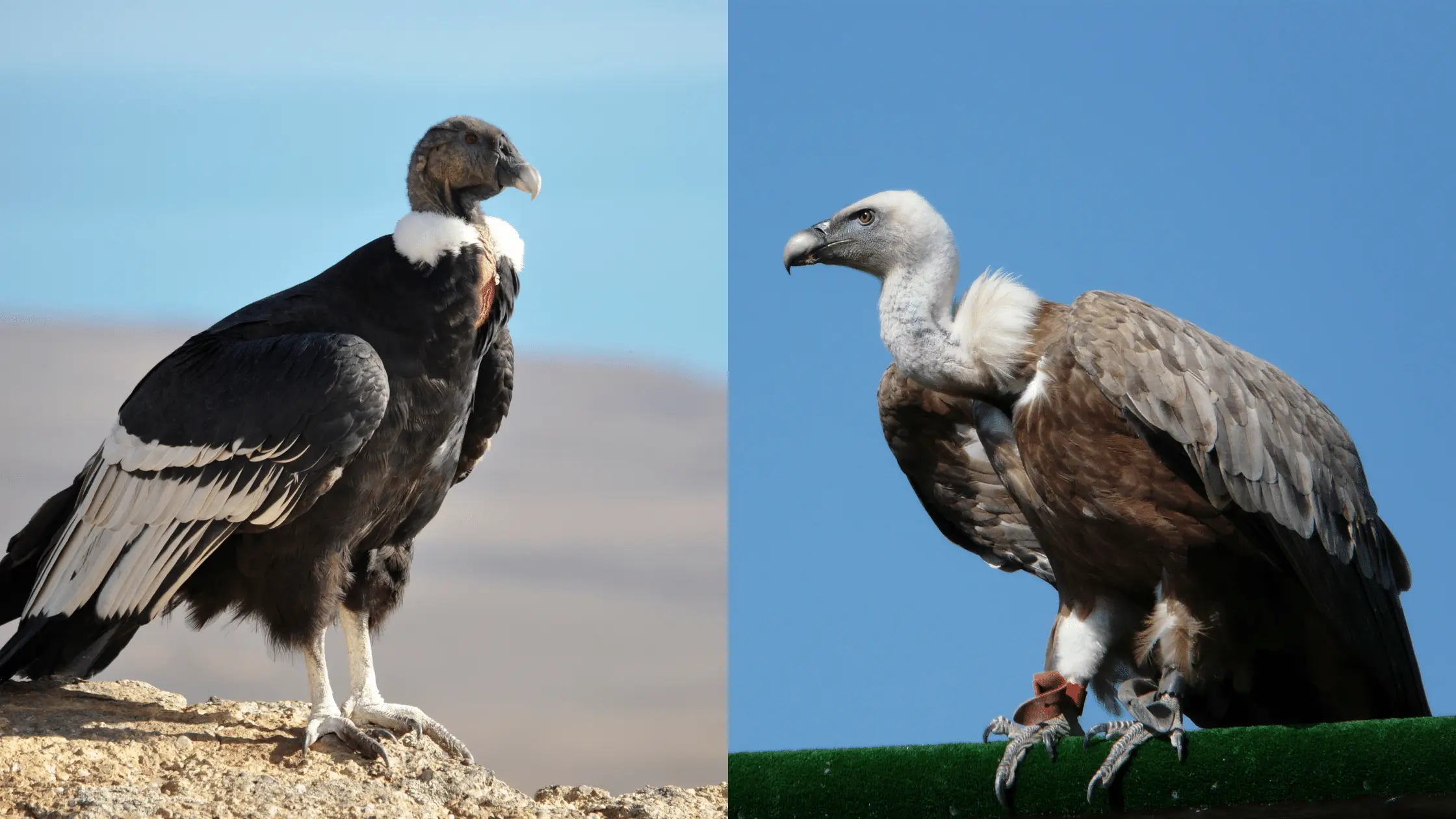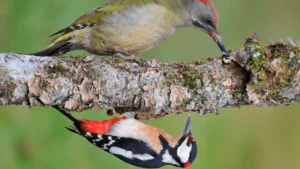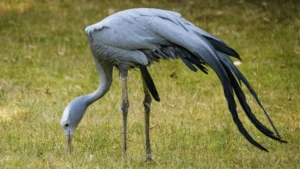Condor and Vultures, are they the same? The difference between condors and vultures is not always clear to most people, and we can understand why. Like buzzards, the name condors have often been used interchangeably with vultures, which adds to the confusion about vultures, condors, and buzzards.
The difference between condors and vultures isn’t hard to understand once you commit to learning about them. We have decided to make the learning process easier by looking at the differences between these two amazing birds. So, vultures and condors, what is the difference?
What Are The Differences Between Condors And Vultures?
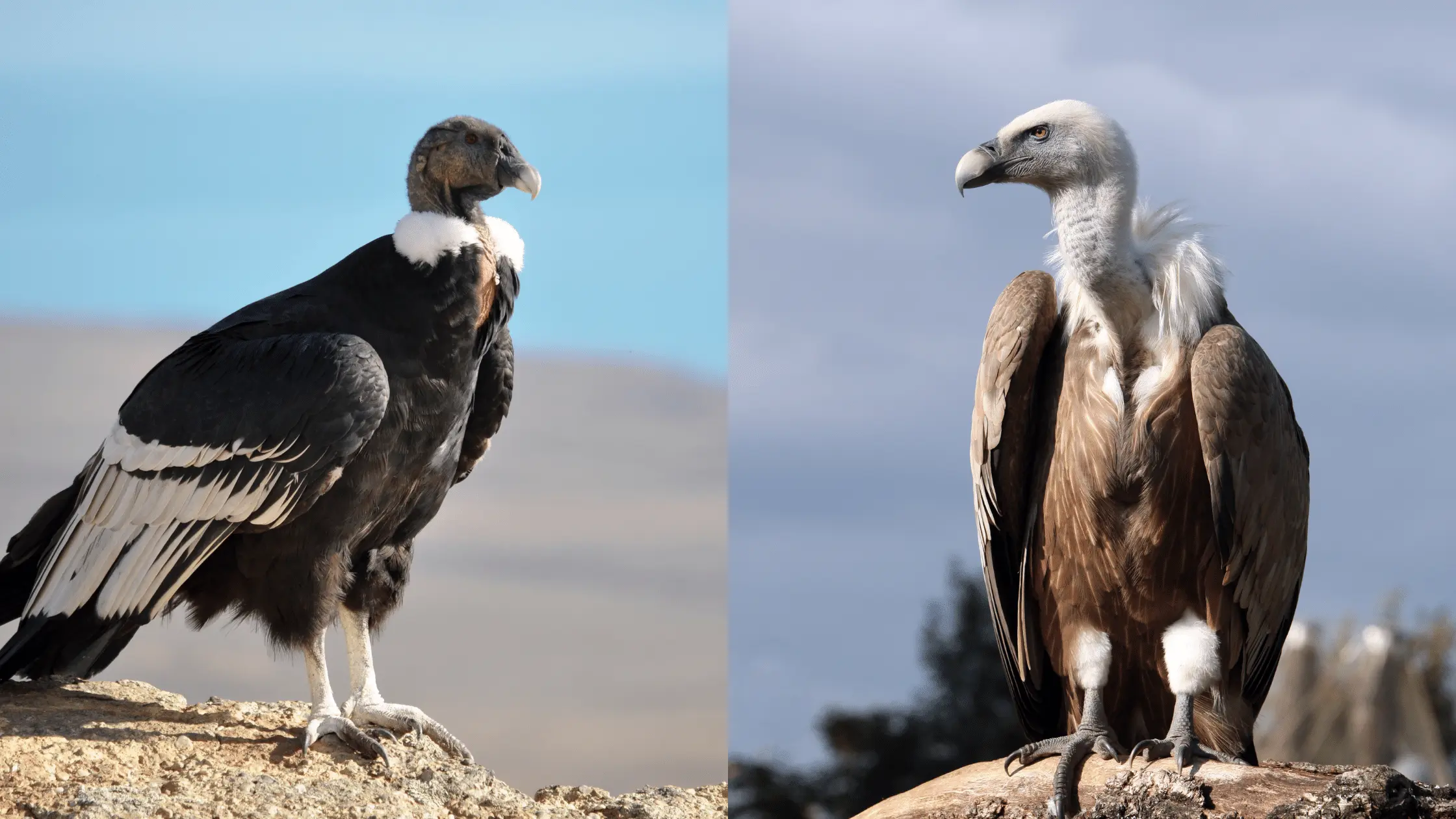
The confusion between condors and vultures is that most people think there is a single species called “Vulture.” However, this isn’t true. There are many species and subfamilies of vultures.
As we explained in our Buzzards vs. Vultures article, world vultures are divided into two groups. They are divided into old-world vultures and new-world vultures. The old world vultures cover Africa, Asia, and Europe. On the other hand, new world vultures cover the Americas. Condors fall into the group called the new world vultures.
There are two species of condors—the Andean and the Californian. The California Condor lives in North America, while the Andean vultures live in Western South America. The Andean takes its place as the second heaviest flying bird, coming second in having the widest wingspan.
Old-world and new-world vultures show us how fascinating convergent evolution can be. Convergent evolution postulates that both old and new world vultures evolved separately from different genetic ancestors but share the same ecological niche.
As we stated earlier, condors fall into the new world vultures. This means that they belong to the family Cathartidae, and they are believed to have evolved from storks. However, their evolution from storks is still debatable. Old-world vultures are in the family Accipitridae, and they are believed to have evolved from hawks and eagles.
The main difference between a vulture and a condor is size. Condors are classified as a type of vulture. They are also the biggest vultures.
What Are The Different Condor Species?
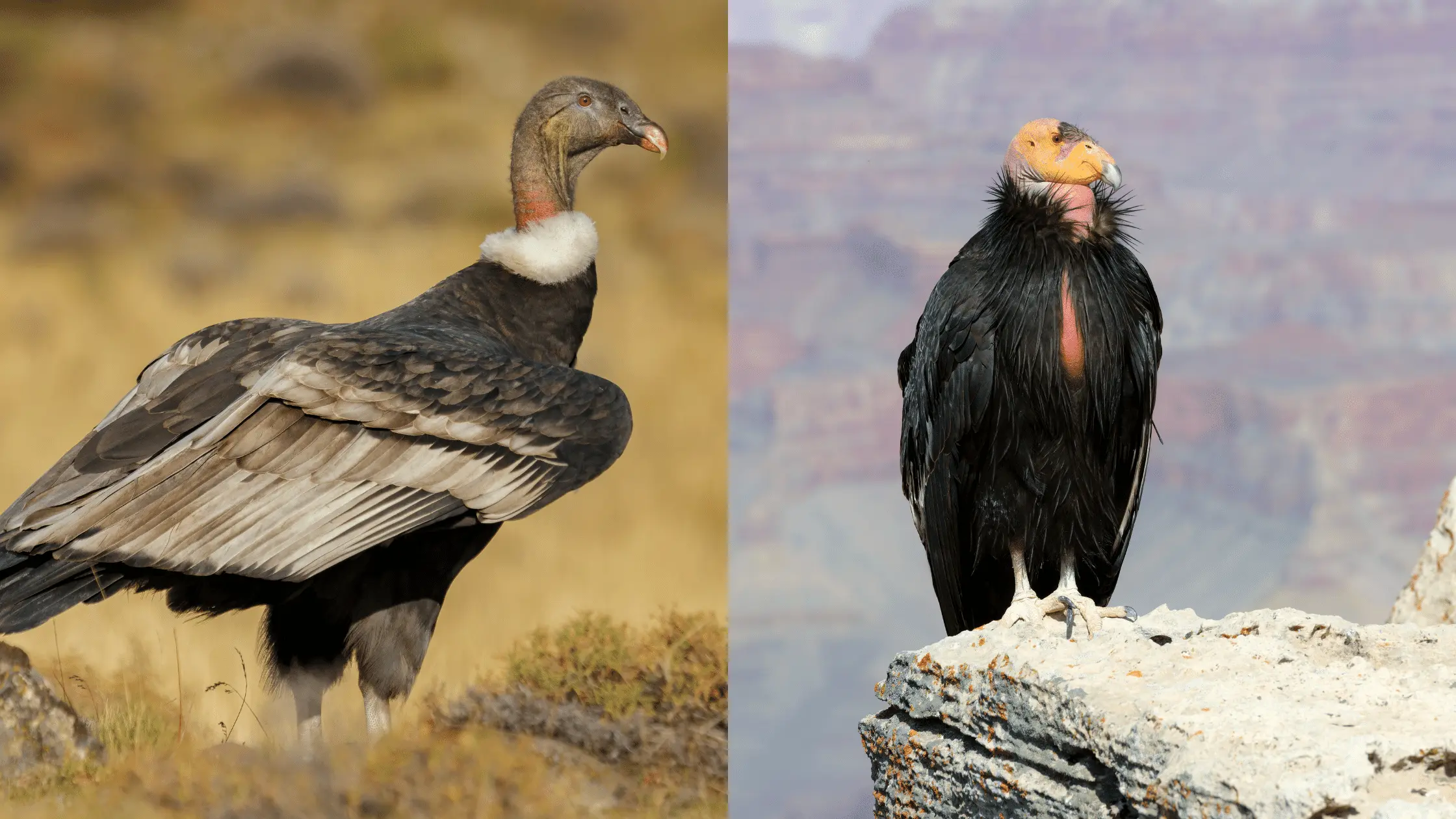
There are only two condor species. They are known as Andean and the California Condor. They are both slightly bigger than the other new world vultures.
Andean condors are massive. They get their name because they live along the Andean mountain range. The Andean mountain range is located on the western coast of America. Andean condors are massive, and they back it up with a large wingspan, one the biggest in the world. Their wingspan can go as long as 12.5 feet.
These massive birds weigh up to 33 lbs. Because of their wingspan, they can soar for hours as they look for food. Condors also like to live in high places. They also want to eat carrion carcasses of cows and alpacas.
Just like Andean condors, California condors are also large. They are part of the new world vultures. California condors became shortly extinct in 1987. This is because they were killed off when people started to view them as pests. Thankfully, a few wild specimens were captured and released. This caused the California condors to become populated in the wild again.
The California condor lives in locations such as Utah, Arizona, Baja, Mexico, and Mexico. The California condor has a wingspan of 9.5 feet which is a shorter wingspan than the Andean condor. They are heavy too, but they weigh about 24 lbs which is less than the Andean condor.
In terms of diet, the California condors and the Andean condor have similar diets. Some common foods the California condor eats are goats, deer, donkeys, and any dead meat they can find.
New World Vultures
Since condors are classified under new world vultures, we will briefly discuss other vultures that fall into the new world vultures family in this paragraph. We won’t discuss the Andean and California condors since we have already discussed them.
Black Vultures
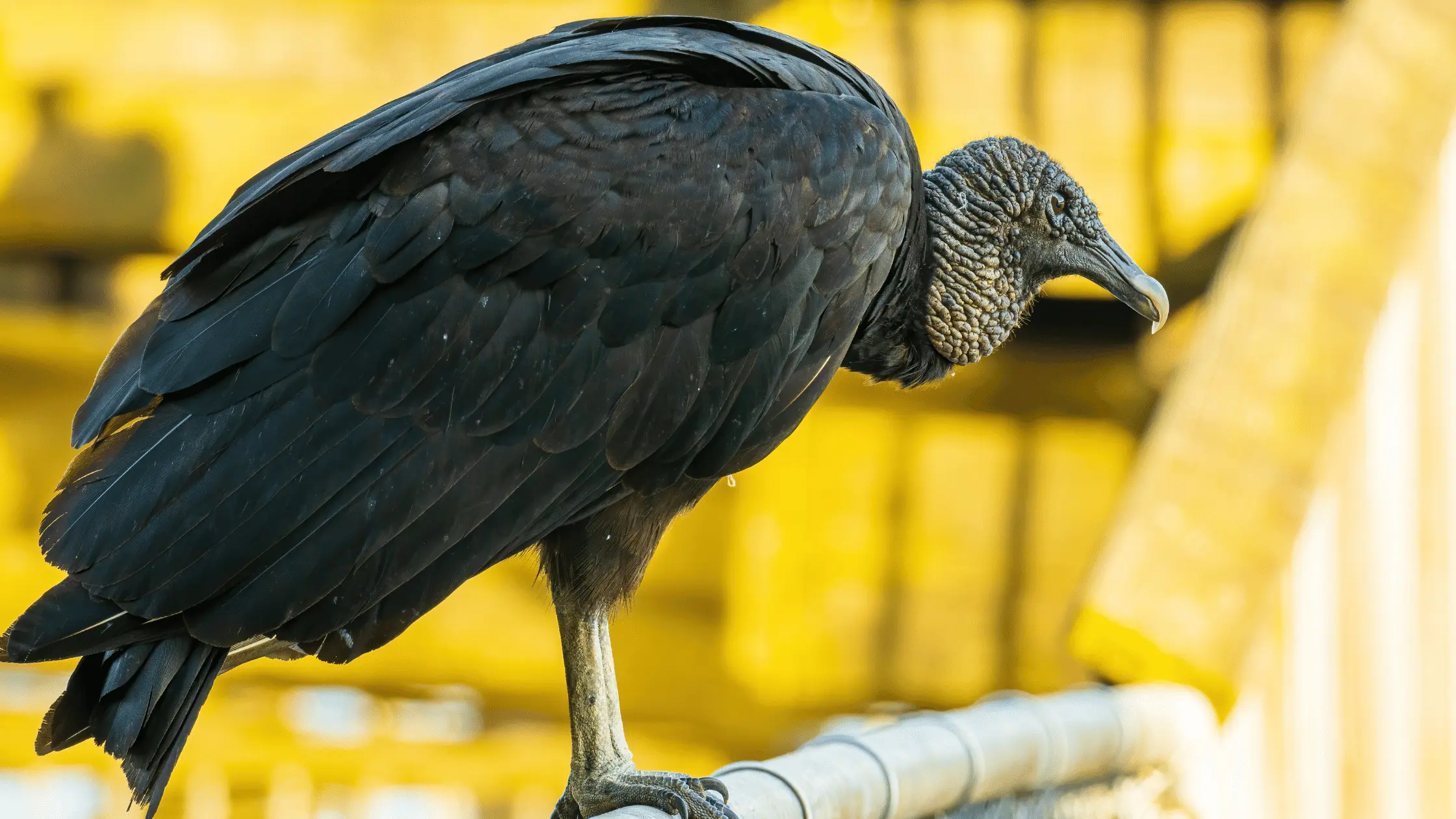
Let us start with Black vultures. Black vultures get their name from their black plumage. They have the characteristic bald head of vultures. Their legs are gray and white, and they have little patches of white under their wings. If you’ve ever seen a grim reaper, then you’ve seen black vultures.
Black vultures are about two feet tall, and their wingspans can reach up to 5 ft. They are among the largest birds in North America because of the sheer size of their wings. They also weigh about 4 lbs.
Turkey Vultures
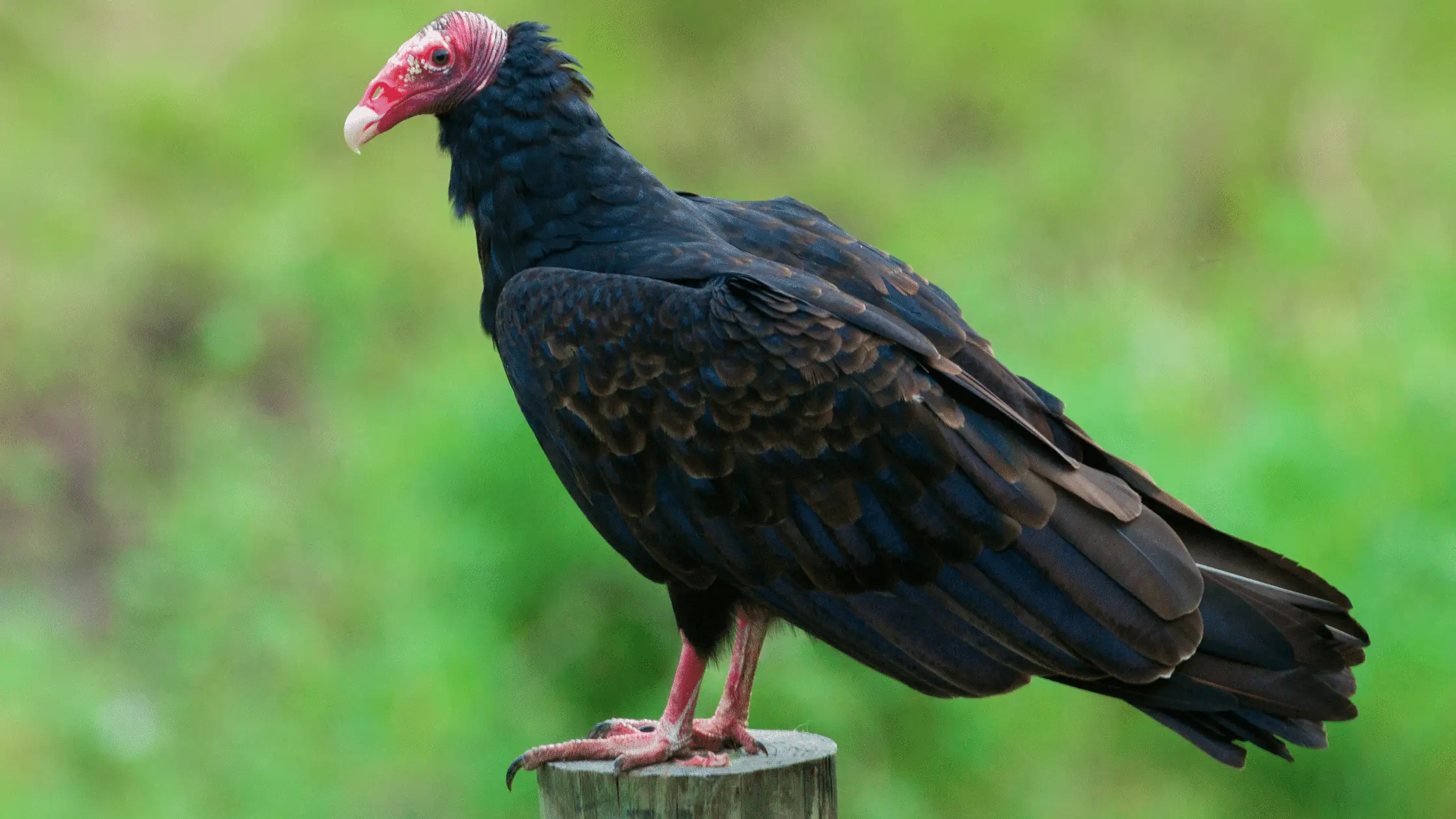
Like the black vultures, turkey vultures get their names from their looks. They look like turkeys with their bald heads. However, turkey vultures are smaller than actual vultures. They don’t have white undersides like black vultures; instead, the turkey vulture has brown and white underparts. Their legs are either black or light brown.
When they stand, turkey vultures are 2.5 feet tall, and their wingspan can reach lengths of 6 feet. That is quite a long wingspan!
King Vultures
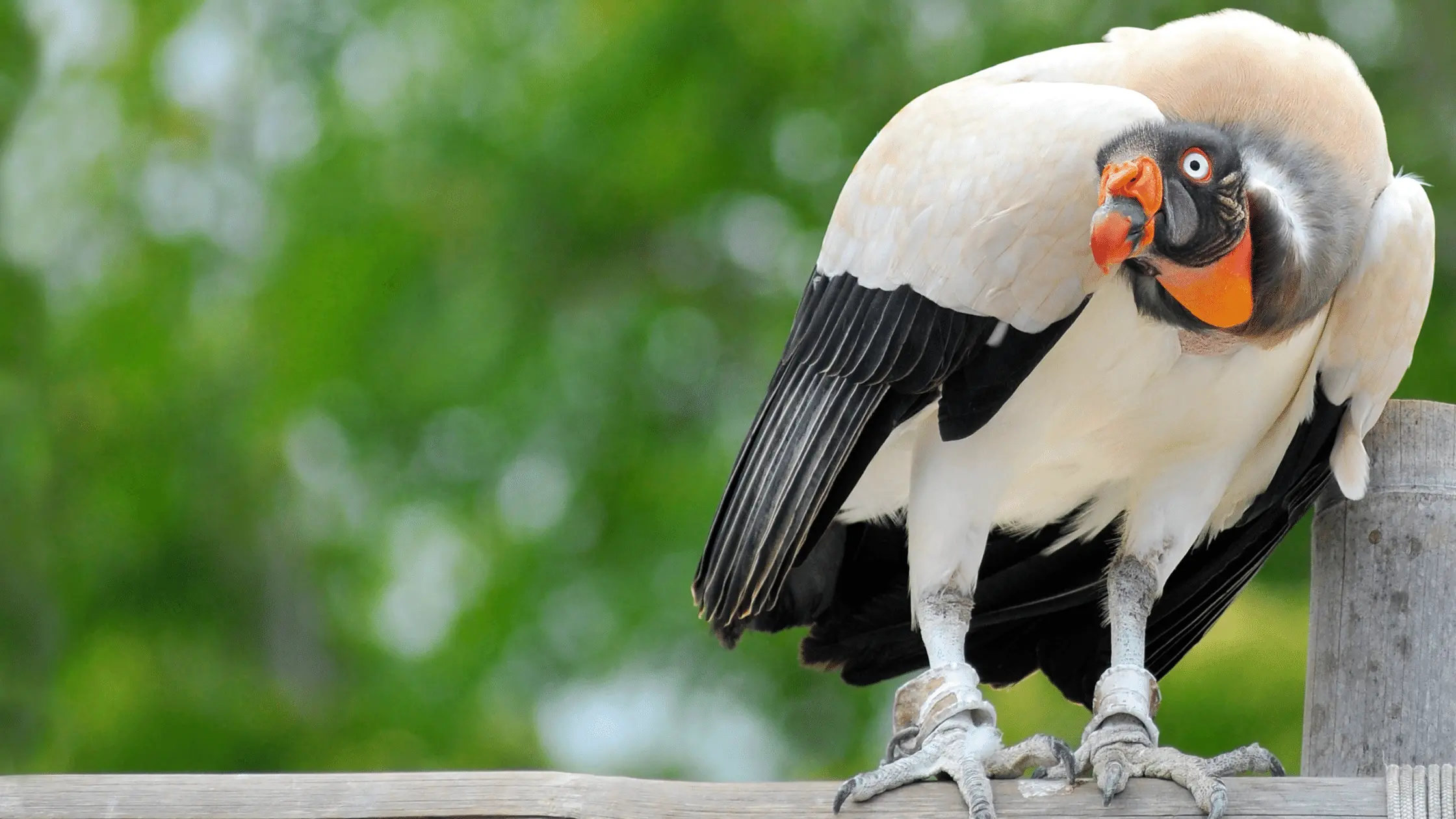
The king vultures are probably the most colorful in the new world vulture family. The basic colors of these vultures are black and white. They spot a brightly colored head with shades of purple, orange, red and blue. King vultures come only second to condors in terms of size in the new world vultures family.
The wingspan of these gigantic birds can reach seven feet. This is taller than most human beings. The king vultures weigh about 10 lbs. Their beaks are strong for ripping up strong hides of carrion.
Greater Yellow-Headed Vulture
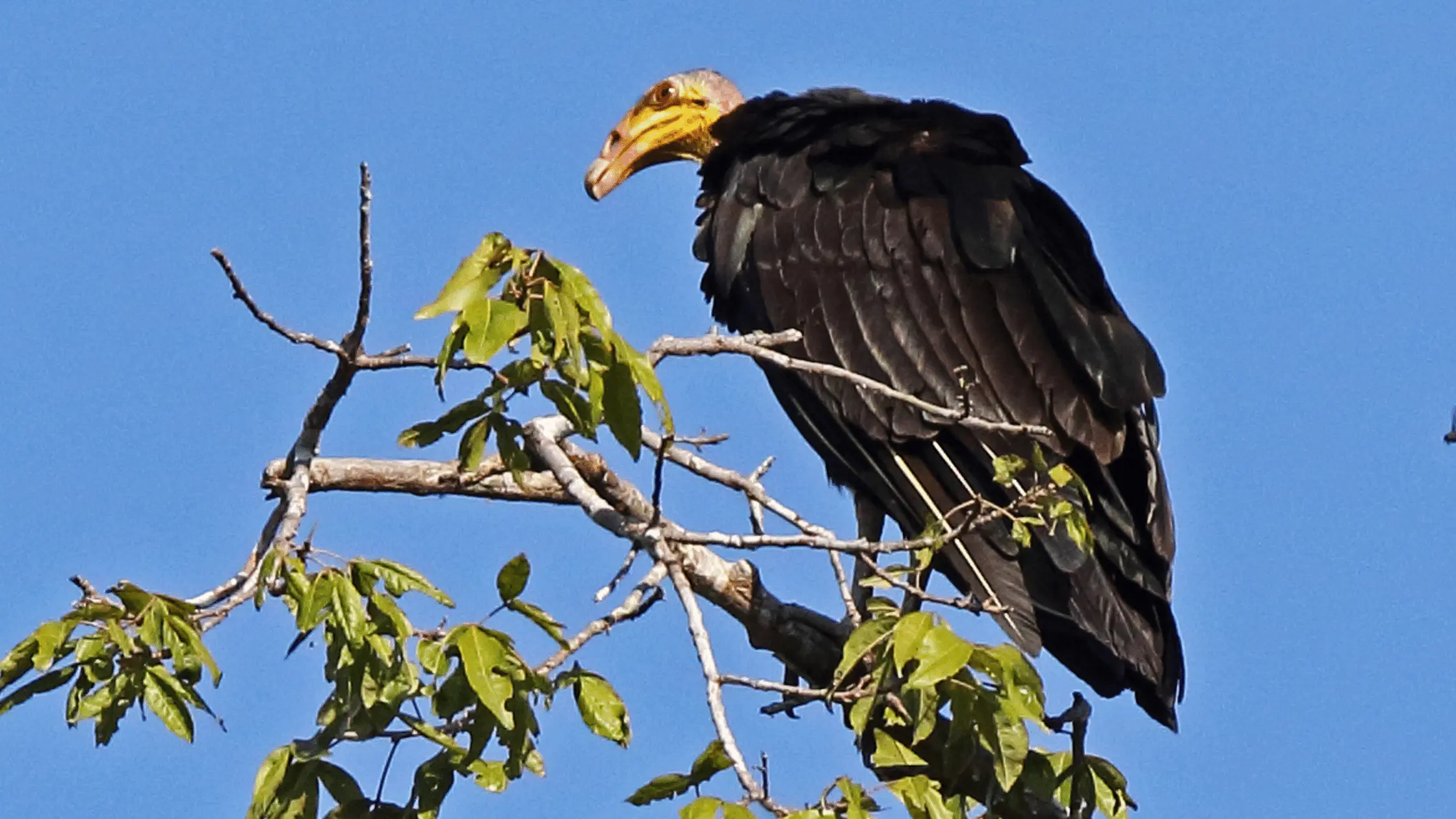
The greater yellow-headed vulture is also known as the forest vulture. They are not large as the king vulture or condors, but they can hold their size. The forest vulture lives in the moist lowland forests of South America. They have a wingspan of 65-70 inches and weigh about 1.65kg.
The greater yellow-headed vulture has a good smell and can locate carcasses from miles away. The beak of the greater yellow-headed vulture isn’t as strong as the king vulture. So, the great yellow-headed vulture allows the king vulture to eat first, tearing the tough hide before they(the forest vulture) can access the soft innards.
They don’t build their nests on tree branches like robins; instead, the greater yellow-headed vulture builds its nest on cave floors and feeds its babies by regurgitating food.
Lesser Yellow-Headed Vulture
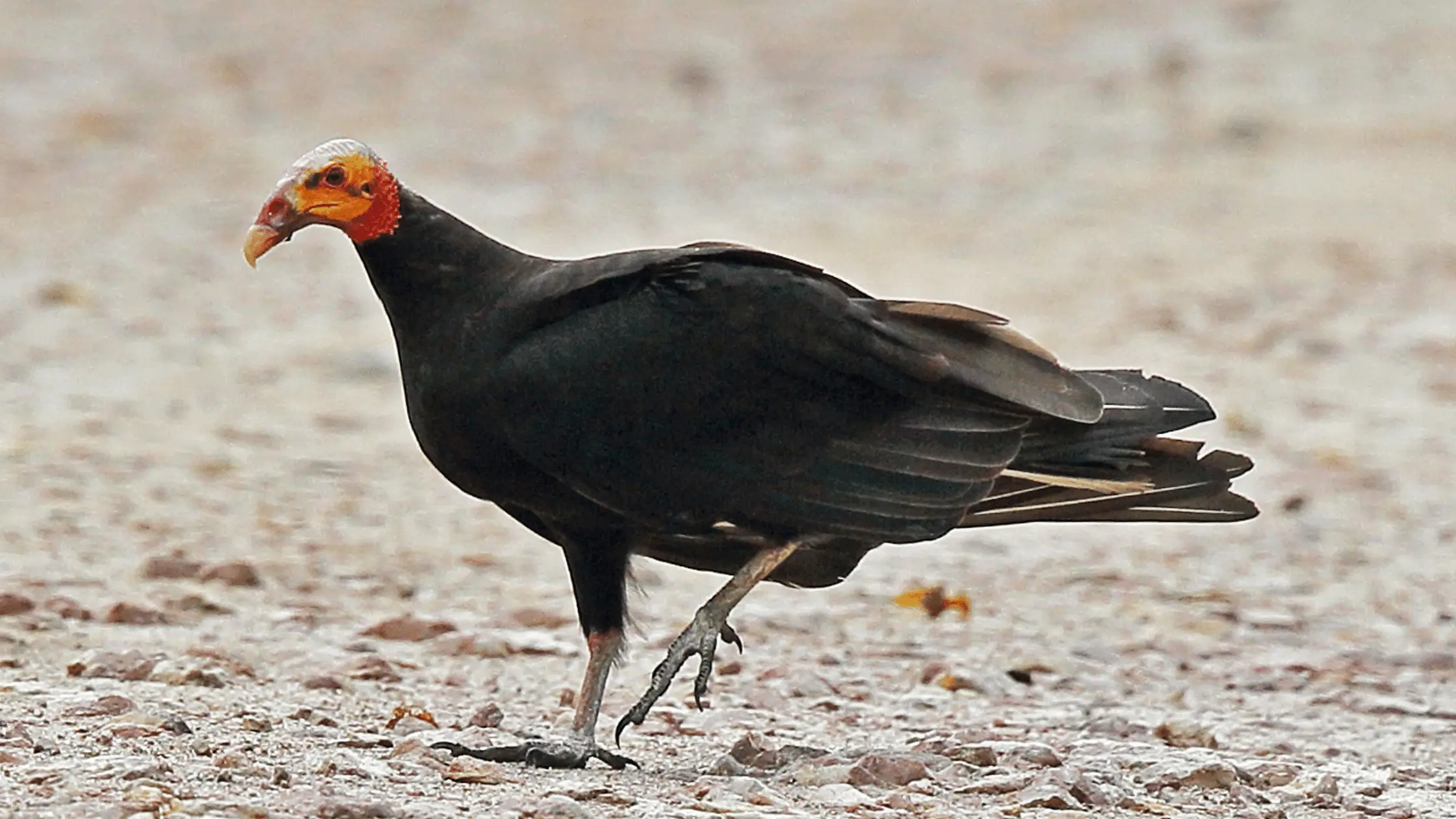
The lesser yellow-headed vulture is known as the savannah vulture. They can be found in Central America, Mexico, and South America. They like to live in grasslands and swamps. They have a considerable length of wingspan, which is about 150cm in length.
They have black plumage, and like other vulture species, they have a neck and head devoid of feathers. Their neck and head color are pale orange with specks of red. The specks can also come in blue. They locate their food by smell or sight and eat dead carrion.

